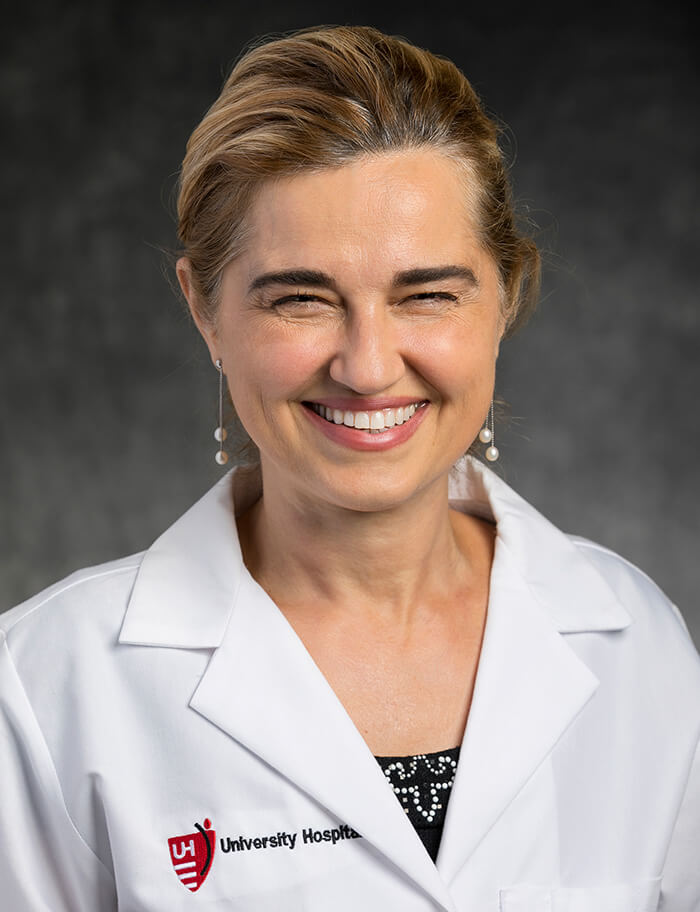Addressing the Global Diabetes Epidemic
November 07, 2022
Innovations in Diabetes & Endocrinology | Fall 2022
November 14 marked World Diabetes Day, established in 1991 by the International Diabetes Federation (IDF) and the World Health Organization (WHO) to raise awareness about the disease’s global impact. Since that first campaign, prevalence of diabetes has soared. According to IDF estimates, 537 million people are living with diabetes around the world — one out of every 10 adults. That percentage is even higher in the United States, where the Centers for Disease Control and Prevention (CDC) estimates that 37.3 million, or 11.3 percent, of Americans are diabetic.
 Betul Hatipoglu, MD
Betul Hatipoglu, MD“It is crucial to acknowledge the burden diabetes has become for society and the individuals living with it,” says Betul Hatipoglu, MD, Director of the University Hospitals Diabetes & Obesity Center. “The impact of the diabetes epidemic is unacceptable, contributing to shortened life expectancy and disproportionally affecting socioeconomically disadvantaged individuals.” Additionally, the global healthcare cost of managing the disease continues to rise beyond expectation, accounting for $966 billion, or 9 percent, of adult healthcare spending in 2021.
Ohio Exceeds National Average
Recent Ohio Department of Health data show that 12.4 percent of Ohioans have diabetes, exceeding the national average. “We need to address the urgency of this matter at our local and state level,” says Dr. Hatipoglu, who is also the Mary B. Lee Chair in Adult Endocrinology at University Hospitals Cleveland Medical Center. “It is imperative for the public to understand their susceptibility and options to stop the progress or even reverse the disease.”
The Silent Risk of Prediabetes
Type 2 diabetes is a chronic condition that can be avoided or delayed by lifestyle modifications, including a healthy diet, physical activity and weight management. However, too many people are not making the necessary changes. The CDC estimates that 1 in 3 American adults (96 million) have prediabetes, 80 percent of whom are undiagnosed. In response, the U.S. Preventative Services Task Force now recommends that diabetes screening for overweight and obese adults begins at age 35. “The alarming reality is that too many individuals are unaware of the danger that is brewing or how to reduce their risk,” says Dr. Hatipoglu.
Rethinking Care Pathways
The staggering number of patients has led to fragmented access to diabetes care across the nation. If the approximately 8,000 endocrinologists practicing in the U.S. divided the caseload mathematically, each physician would be responsible for over 46,000 patients. At University Hospitals, Dr. Hatipoglu and her colleagues are creating new pathways for care delivery by opening channels of communication with primary care physicians (PCPs).
A quality improvement research study is utilizing electronic medical records and a diabetes helpline for PCPs to reach out to the health system’s endocrinologist with questions or request recommendations via a chart review. Over the past year, these initiatives have enabled treatment of over 1,000 patients at University Hospitals. Researchers are also exploring the role that pharmacists, physician assistants and nurse practitioners can play in care delivery.
“How can we rethink classically accepted appointment structures to better serve our community?” she says. “Every day that an individual waits for the care they deserve is a day that is irreversible.”
Experts within the UH Diabetes & Obesity Center are also collaborating with Ohio Public Health and the Cleveland Foundation to tackle obesity, food insecurity and insulin affordability in Northeast Ohio neighborhoods. “We are reaching out to patients closer to where they live and work,” says Dr. Hatipoglu. “We want to ensure that the people who need care the most have an opportunity to receive it.”
Despite myriad challenges, Dr. Hatipoglu sees reason for future hope. With advances in insulin delivery and glucose monitoring technology, combined with promising medications on the horizon, she is excited to continue the diabetes fight. “It is an honor and a privilege to be a part of the innovation happening here at University Hospitals,” she says. “Despite the doom about the numbers, there is much to celebrate.”
For more information, contact Betul Hatipoglu, MD at Betul.Hatipoglu@UHhospitals.org.
Contributing Expert:
Betul Hatipoglu, MD
Director, University Hospitals Diabetes & Obesity Center
Vice Chair, Clinical Affairs
Mary B. Lee Chair in Adult Endocrinology
University Hospitals Cleveland Medical Center
Professor
Case Western Reserve University School of Medicine


